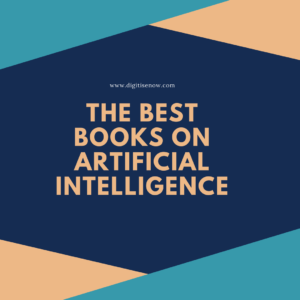
The Singularity Is Near: When Humans Transcend Biology is a 2005 non-fiction book about artificial intelligence and the future of humanity by inventor and futurist Ray Kurzweil.
The book builds on the ideas introduced in Kurzweil’s previous books, The Age of Intelligent Machines (1990) and The Age of Spiritual Machines (1999). This time, however, Kurzweil embraces the term the Singularity, which was popularized by Vernor Vinge in his 1993 essay “The Coming Technological Singularity” more than a decade earlier.[1]
Kurzweil describes his law of accelerating returns which predicts an exponential increase in technologies like computers, genetics, nanotechnology, robotics and artificial intelligence. Once the Singularity has been reached, Kurzweil says that machine intelligence will be infinitely more powerful than all human intelligence combined. Afterwards he predicts intelligence will radiate outward from the planet until it saturates the universe. The Singularity is also the point at which machines intelligence and humans would merge.
A superintelligence is a hypothetical agent that possesses intelligence far surpassing that of the brightest and most gifted human minds. “Superintelligence” may also refer to a property of problem-solving systems (e.g., superintelligent language translators or engineering assistants) whether or not these high-level intellectual competencies are embodied in agents that act in the world. A superintelligence may or may not be created by an intelligence explosion and associated with a technological singularity.
University of Oxford philosopher Nick Bostrom defines superintelligence as “any intellect that greatly exceeds the cognitive performance of humans in virtually all domains of interest”. The program Fritz falls short of superintelligence even though it is much better than humans at chess because Fritz cannot outperform humans in other tasks. Following Hutter and Legg, Bostrom treats superintelligence as general dominance at goal-oriented behavior, leaving open whether an artificial or human superintelligence would possess capacities such as intentionality (cf. the Chinese room argument) or first-person consciousness (cf. the hard problem of consciousness).
Technological researchers disagree about how likely present-day human intelligence is to be surpassed. Some argue that advances in artificial intelligence (AI) will probably result in general reasoning systems that lack human cognitive limitations. Others believe that humans will evolve or directly modify their biology so as to achieve radically greater intelligence. A number of futures studies scenarios combine elements from both of these possibilities, suggesting that humans are likely to interface with computers, or upload their minds to computers, in a way that enables substantial intelligence amplification.
Some researchers believe that superintelligence will likely follow shortly after the development of artificial general intelligence. The first generally intelligent machines are likely to immediately hold an enormous advantage in at least some forms of mental capability, including the capacity of perfect recall, a vastly superior knowledge base, and the ability to multitask in ways not possible to biological entities. This may give them the opportunity to—either as a single being or as a new species—become much more powerful than humans, and to displace them.
Rise of the Robots: Technology and the Threat of a Jobless Future is a book by American futurist Martin Ford. Rise discusses the impact accelerating change and artificial intelligence will have on the labor market. His thesis is that there will be great social and economic disruption, as educated workers will no longer be able to find employment; unlike in previous technological revolutions, very few new jobs will be created in the course of the ongoing disruption.
The Second Machine Age: Work, Progress, and Prosperity in a Time of Brilliant Technologies is a 2014 book by Erik Brynjolfssonand Andrew McAfee which is a continuation of their book Race Against the Machine. They argue that the Second Machine Age involves the automation of a lot of cognitive tasks that make humans and software-driven machines substitutes, rather than complements. They contrast this with what they call the “First Machine Age”, or Industrial Revolution, which helped make labor and machines complementary.
Some examples that the book cites include “software that grades students’ essays more objectively, consistently and quickly than humans” and “news articles on Forbes.com about corporate earnings previews” — “all generated by algorithms without human involvement.”
Permutation City is a 1994 science-fiction novel by Greg Egan that explores many concepts, including quantum ontology, through various philosophical aspects of artificial life and simulated reality. Sections of the story were adapted from Egan’s 1992 short story “Dust”, which dealt with many of the same philosophical themes. Permutation City won the John W. Campbell Award for the best science-fiction novel of the year in 1995 and was nominated for the Philip K. Dick Award the same year. The novel was also cited in a 2003 Scientific American article on multiverses by Max Tegmark.